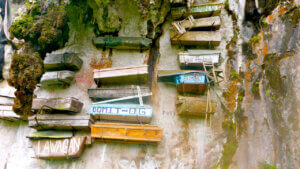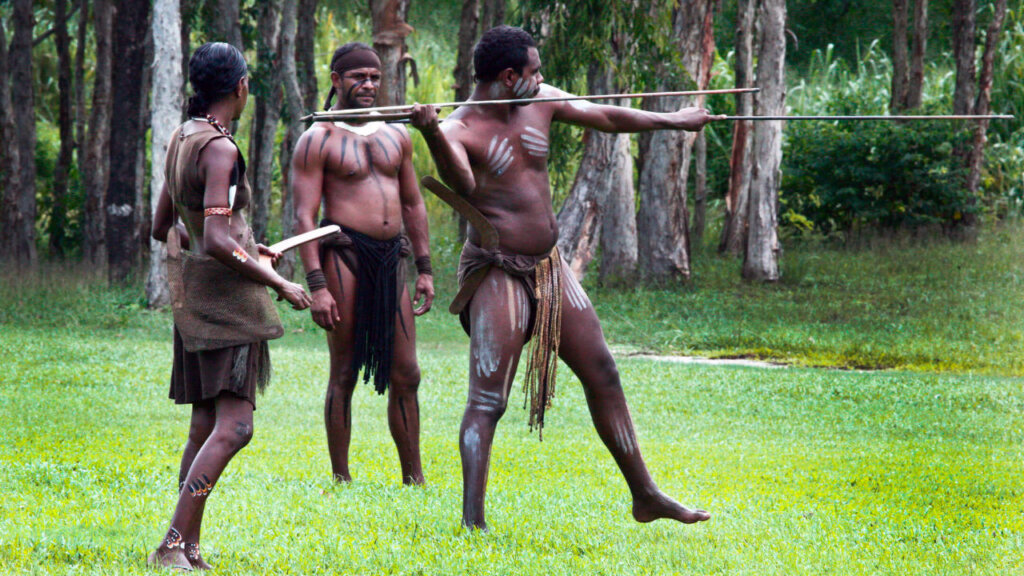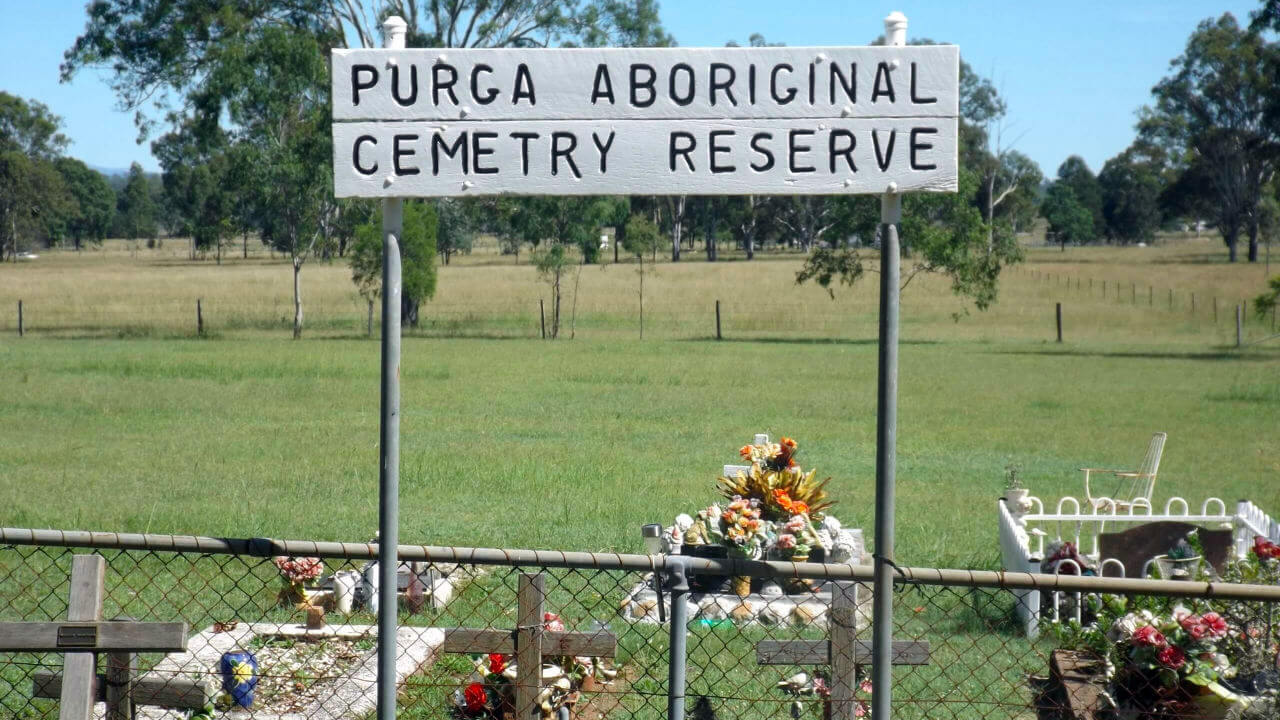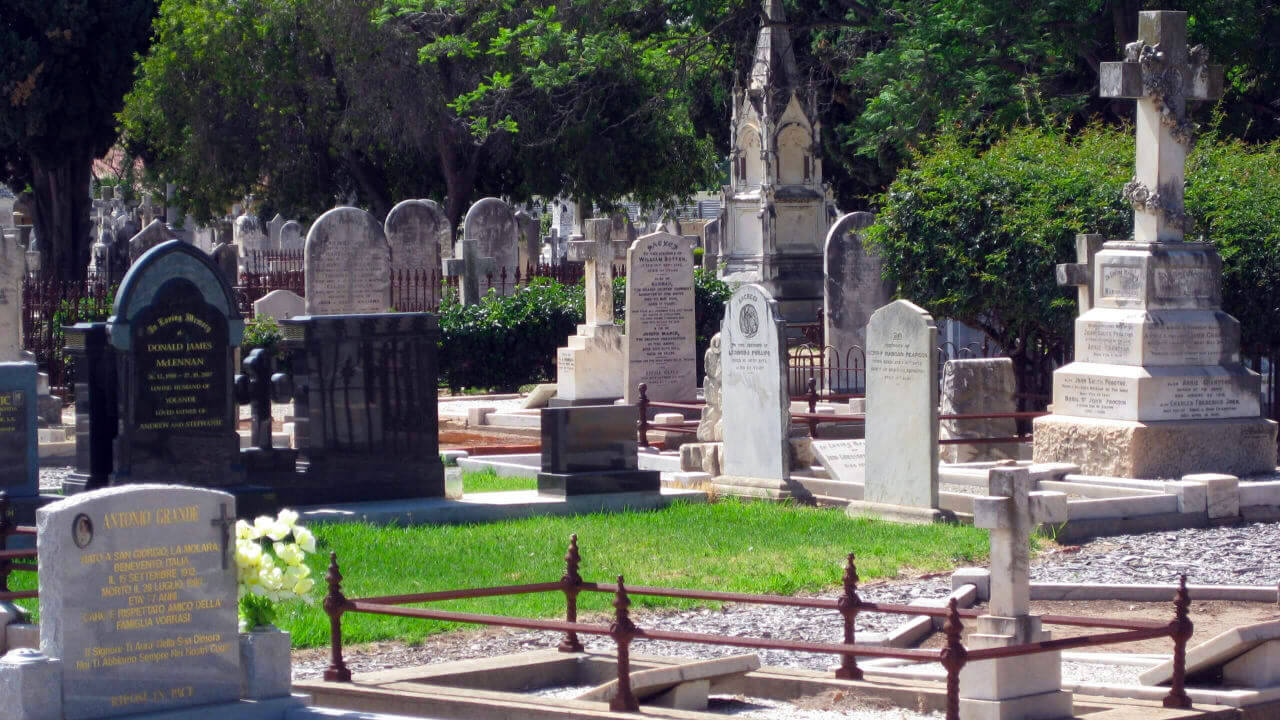
While Australia is mostly (52,1%) a Christian country, Aboriginal death customs are still present. The mourning period for Aboriginals lasts from days to years, and they have a variety of customs. In this post we offer a look at both older and modern Australian death traditions. This includes the Aboriginal sorry business, but also an explanation of avoidance practices regarding the dead.
Before we dive into Aboriginal death customs, we should consider their religion. However, there is not just one belief system for all indigenous peoples in Australia.
When it comes to the dead, most tribes traditionally believed that the spirit needed to go to the Land of the Dead. Notions of heaven and hell though, were not a part of their beliefs. So the idea of an Aboriginal afterlife with rewards or punishment does not exist.
Instead, aboriginals focus on helping the spirit in its journey. That could only happen if they had properly completed certain rites when they were alive. After death, rites were also important, and the relatives of the dead had to perform them appropriately.

According to most traditions, the human spirit cannot be destroyed, even after the body dies. Instead, it becomes one with elements of nature called the everywhen. Researchers have not managed to successfully translate the term Everywhen – or Dreaming. It roughly means that nature and ancestral spirits share a close connection. The Dreaming also exists beyond space or time.
This Dreaming is a wide-ranging way of life. Part of the human spirit remains behind close to where the person died. It may then turn into a dangerous but short-lived ghost. The other part of the soul is the immortal spirit that joins the Dreaming.
Additionally, the western tribe of Aranda believed that the soul travels to a faraway island to become part of this Dreaming. Other Central Australian Aboriginals thought that the Land of the Dead is in the sky. The Aboriginal death customs directly relate to these beliefs. Specifically, they see that the spirit of the deceased will be able to reach this Land of the Dead.

The journey of the spirit defined both the specific funeral rites and broader death customs in Aboriginal communities. Collectively these are called sorry business.
Aboriginal sorry business affects the whole community as everyone mourns. In some cases they may delay burials since they need to bury the dead close to their hometown. Delays happen also due to weather conditions, especially during the monsoon period. Traditionally, most burials took place close to water. This is why sometimes people find bones of Aboriginals in sand dunes. Aboriginal also buried their dead in caves or crevices.
Other Aboriginal death customs include:

According to Aboriginal customs, people should avoid certain relations between their kin. For example, brothers and sisters should not speak at all once they are adults. More often, the son or daughter should not speak to their mother-in-law. These avoidance practices relate to the relationship many Aboriginals have with their dead.
When someone dies, relatives do not speak their name as a sign of respect. It is also a painful reminder of the family’s loss. Even asking if someone has died, likely causes uneasiness to Aboriginals. Instead, they usually call the dead uncle/aunt or that old man/lady. Other names that people use include ‘Kumantjayi’, ‘Kwementyaye’, ‘Kunmanara’ or ‘Barlang’.
Modern Aboriginals avoid sharing or showing photos and footage of the dead. This can be a challenge because media may show videos or photos of the dead. Indigenous Australians find this culturally challenging. There are continuous efforts from broadcast companies to use disclaimers before they show footage of a deceased.
Another modern issue Aboriginals face regarding name avoidance, is their larger communities. In older times, they could live farther away from each other, forming smaller clans. With modernization and the reduction of their numbers, it is also more difficult for them to not speak the name of the dead. Multiple people end up having the same name, so recently rarer and foreign names became popular.

Non-indigenous Australian funeral customs include a direct burial, as a cheaper version of the traditional funeral. Cremations are quite common and still rising in popularity. Another option is the more private graveside service. That is a brief service at the cemetery or crematorium immediately after the funeral.
There are also memorial services that relatives can hold any time before or after the funeral. Additionally, a recent trend are the green or natural burials. During these, they wrap the body in a shroud and bury it without a coffin. They also do not embalm the corpse to reduce environmental pollution. This is also a cheaper option since having a grave at a Melbourne cemetery could cost up to 7.000 dollars!

We hope you learned something new regarding this country’s death practices!
If you want know more about funeral practices of nearby nations, we recommend out our Papua New Guinea or Indonesia article!
The average mixed death rate in Australia is 6,3 per 1.000 people (2018).
The family is allowed to bury or cremate the body of their relative already the same or following day after it has been released to them by the coroner. The law does not request the presence of a religious authority at the cremation or burial.
Over 30% of Australians identify as non-religious. Historically the country was mostly Protestant. However, nowadays most religious people are Catholic, while Protestantism, other forms of Christianity and Islam follow in lower rates.
Australia has a high rate of utilized organs, reaching a 20,10 per million population (2019). That corresponds to 511 utilized organs in 2019!